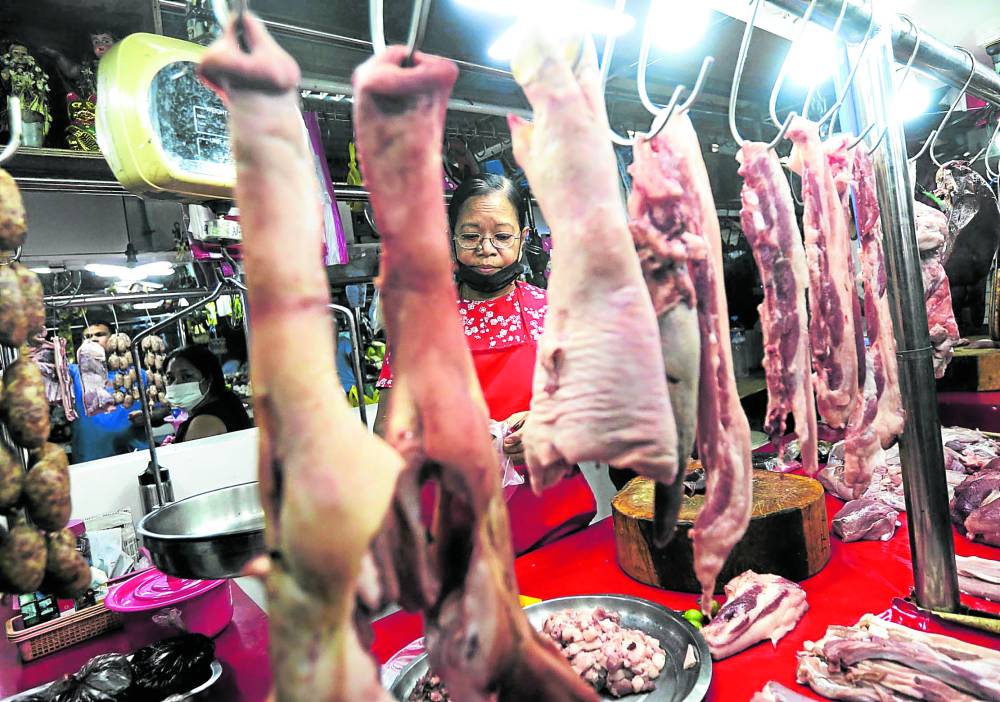Pork stocks more than enough, DA says

INQUIRER FILE PHOTO
The Department of Agriculture (DA) has assured Filipino consumers that the country has enough supply of pork, just days after it was reported that the domestic stockpile dipped slightly in the fourth quarter.
“We are talking to (the Bureau of Animal Industry). We have enough pork,” DA deputy spokesperson Rex Estoperez said after a DA researcher said at a government briefing that there was a slight decline in the local pork stockpile.
The researcher’s statement met with stiff rebuttals from agricultural groups Samahang Industriya ng Agrikultura (Sinag) and Pork Producers Federation of the Philippines Inc. (ProPork) which both disproved the claim and said the available buffer in cold storage will last until the early part of next year.
The two groups, which both opposed unnecessary agricultural importations, were quick to rebut the claim apparently because it could again spark simulated shortages.
“I completely disagree with the statement that there is [a] shortage in pork supply when in fact we have more than enough supply that could last beyond [the first quarter] of 2023,” said ProPork president Rolando Tambago in a message to the Inquirer.
Article continues after this advertisementTambago also said there are “overflowing pork stocks in cold storage warehouse” nationwide, particularly in the regions of Metro Manila, Central Luzon, Calabarzon and Central Visayas.
Article continues after this advertisementHe also said the country has a “historic high” of 113 million kilograms of pork, noting that output is high in the Visayas and Mindanao which could help plug the supply gap in Luzon.
Sinag executive director Jayson Cainglet said frozen pork stocks stored in warehouses are “unprecedented.”
“It is not decreasing. The volume is growing more and more, beyond their capacity of warehouses,” said Cainglet in a statement sent to reporters.
“Many reefer vans are lined up. There is no storage available for keeping imported pork,” Cainglet said in Filipino.
“If there were a supply gap in pork, rice or chicken, the farm-gate [price of] palay, pork or chicken should have shot up,” he added.
Tambago also noted the self-sufficiency level for pork is 130 percent, considering the demand is less than in the prepandemic period, which is reflected in current retail prices that are not as high as last year.
Public markets in Metro Manila sell pork shoulder meat (kasim) for P300 per kg as of Thursday, lower than P330 per kg in the same period last year, based on the DA’s monitoring. Pork belly (liempo) is priced at P360 per kg, unchanged from a year ago.
Estoperez is anticipating retail prices of pork products to eventually decrease as the repopulation efforts of hog raisers are in progress.
RELATED STORIES
USDA: PH to import more pork, but prices unlikely to go down yet